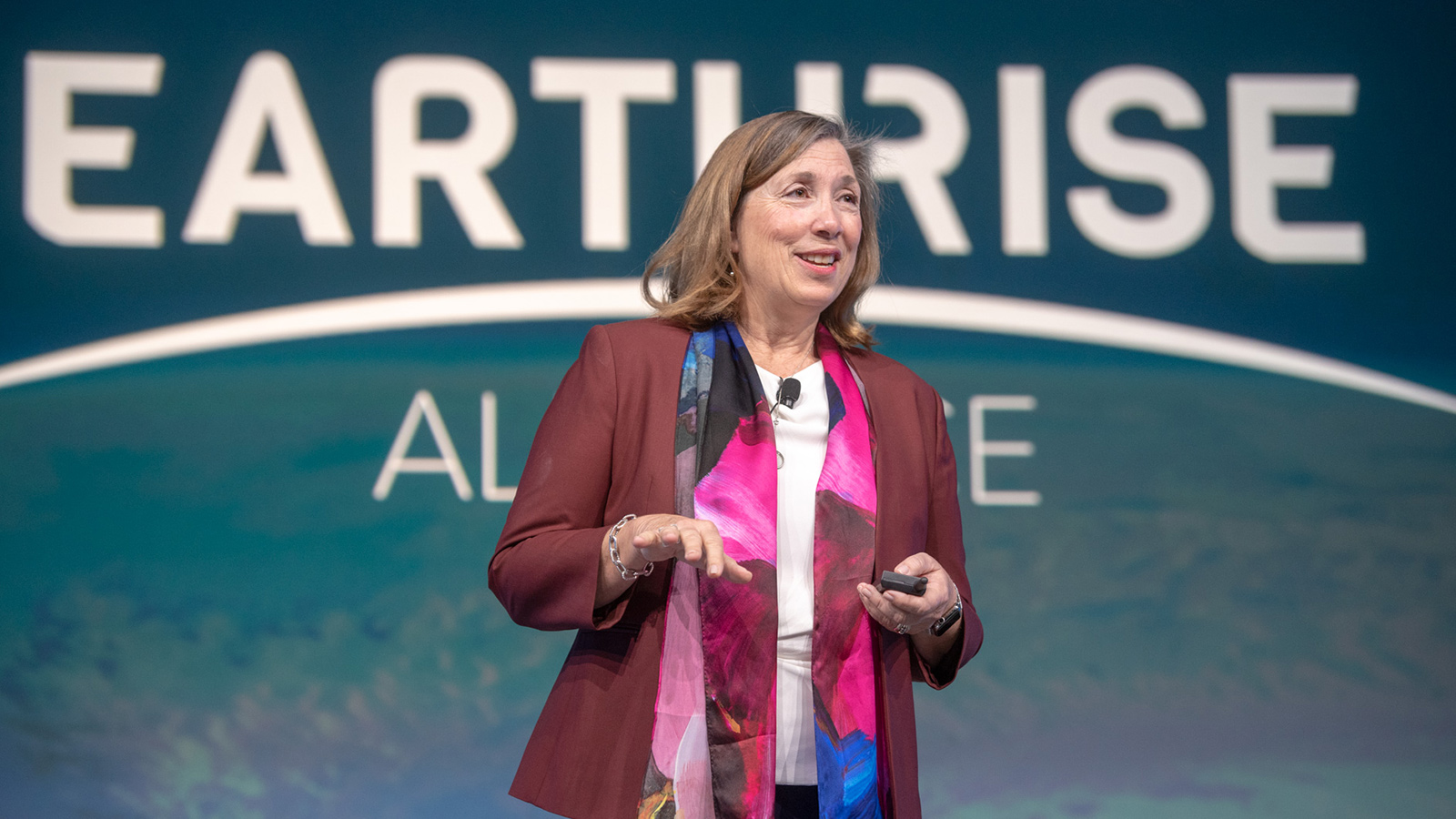Stay Up to Date
Submit your email address to receive the latest industry and Aerospace America news.
Clinton’s former space policy adviser would double Earth science spending
AIAA SCITECH FORUM, Orlando — Returning to the moon is not a big enough goal for NASA, said former NASA official Lori Garver during a speech and Q&A here. Combatting climate change should be the agency’s top priority, she said.
NASA’s Earth science satellites and scientists do not exist just “to show you a pretty picture,” said Garver, now a climate change activist. The job should be “to maintain the integrity of the Earth’s atmosphere.”
Garver’s words underscored how differently NASA’s priorities might have played out had Hillary Clinton won the 2016 presidential election. Garver was the space policy advisor to the Clinton campaign and was the deputy administrator at NASA during the first term of the Obama administration. She is now CEO of the Earthrise Alliance, a non-profit group in Washington, D.C., that funds anti-climate change initiatives.
Referring to the Apollo program of the 1960s and early ’70s, Garver suggested that NASA’s mission over those years was bigger than the goal of landing humans on the moon and returning them to Earth safely.
“After Sputnik, we were scared and NASA came to the rescue,” Garver said. “We did that, and within the timeframe of a challenge that was laid out, which seemed impossible at the time.”
Garver now sees climate change as the “No. 1 global challenge of our time.”
She said she is not proposing that NASA end its human spaceflight initiatives. Her point, she said, is that space exploration cannot return NASA to its heyday. “I think addressing our top global challenge would do that.”
Specifically, Garver would double spending on Earth science, including the satellites that train cameras and spectrometers on the planet’s atmosphere, oceans and land. Right now, NASA spends about $2 billion a year on Earth science compared to $6 billion on human spaceflight, a figure that includes $1.3 billion this year for the Artemis moon program that NASA estimates will cost $20 billion to $30 billion.
A spending shift toward Earth science would have strong public support, Garver predicted. On a giant screen next to the stage, she displayed a 2018 survey from the Pew Research Center. Sixty-three percent of the respondents said NASA’s top priority should be monitoring “key parts of the Earth’s climate system.” Keeping watch for dangerous asteroids came in a close second. Sending astronauts to the moon or Mars scored at the bottom.
“We have our priorities flipped, in my view,” Garver said. “We spend less than 10% of the NASA budget on the top two [priorities] and more than 60% on the bottom two.”
Continuation of the lunar program is anything but guaranteed, Garver said. If President Donald Trump were to lose the November election, she’s skeptical that a Democratic administration would keep the 2024 deadline that the White House has set for a new moon landing.
“Think of them saying, ‘yeah, we’re going to double down on this moon thing,’” she said of the Democratic candidates. She indicated with a shrug that this seems unlikely. “Then think of them saying, ‘we’ve got to address climate change.’”
If Trump is defeated, the Earthrise Alliance will be ready with policies that any president “could put in place from day one,” she said.
Before leaving the stage, Garver noted that engineers created the industrial age “for all the right reasons,” but that the results have been far from universally positive. “We have left the world in a crisis. We need to step up to manage that crisis. If we don’t do that over the next 10 years, we won’t have a chance.”
About cat hofacker
As acting editor-in-chief, Cat guides our coverage, keeps production of the print magazine on schedule and edits all articles. She became associate editor in 2021 after two years as our staff reporter. Cat joined us in 2019 after covering the 2018 congressional midterm elections as an intern for USA Today.
Related Posts
Stay Up to Date
Submit your email address to receive the latest industry and Aerospace America news.




